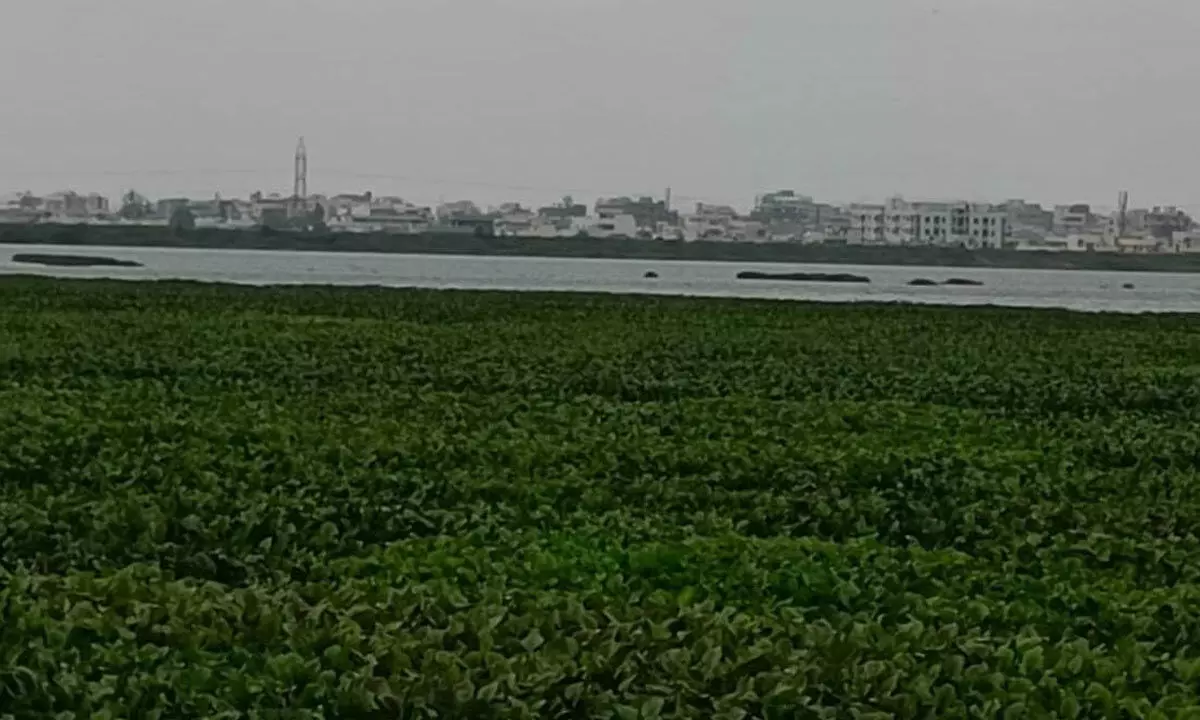Fox Sagar: It once quenched parched throats, now a haven for encroachers

- Initially 490 acres, it has shrunk to 120 acres
- Over 1,014 illegal structures identified in lake’s FTL and buffer zone
- Industrial growth and effluents have worsened lake’s pollution
- Restoration efforts and sewage plant prove ineffective; lake’s health deteriorates
Hyderabad: Fox Sagar Lake, originally built by Asaf Jah VI in 1897 to supply water to the Northern part of the city, has unfortunately become one of the most polluted and encroached-upon water bodies in the area. According to data, over 1,014 illegal structures have been identified within the lake’s Full Tank Level (FTL), largely due to encroachment.
Fox Sagar Lake, Kotta Cheruvu, which is located in Kompally, is the fifth largest lake, spread over 2 km. It once spread over nearly 490 acres initially and slowly the lake shrank into 120 acres. Also, according to Green Tribunal data (released in 2021), around 1,014 illegal structures were identified in the FTL and buffer zone of the lake, and till date the count has been increased massively.
The construction of Fox Sagar took place before the major lakes Osman Sagar and Himayat Sagar in the Musi River basin. A pump house situated in a stone structure was also built on its shore. However, the iron bridge that once connected the pump house to the lake bund now stands rusted, and no concrete steps have been taken to restore the pump house.
Locals have highlighted that the rapid industrial growth in and around Dulapally and Kompally has led to the illegal occupation of several stretches of the FTL and buffer zone of Fox Sagar. Additionally, the lake has become heavily polluted due to the dumping of industrial effluents. Research studies conducted over the course of one year (2019-2020) involved collecting periodic water samples to assess both physicochemical and biological aspects of the existing social and cultural factors that affect the lake. These studies have shown that, based on both physicochemical and biological parameters, the lake is highly polluted and eutrophic.
Despite numerous appeals and petitions, the measures taken by HMDA and GHMC two years ago—such as strengthening the bund, installing fencing, and undertaking landscaping and beautification—have proved inadequate. Once again, the lake has fallen into the hands of encroachers and is now heavily overgrown with weeds.
“Once, the water from this lake was used for consumption and irrigation, but now it is highly polluted. Despite GHMC officials initiating lake restoration efforts two years ago and constructing a sewage treatment plant, these measures have proven ineffective. It seems unlikely that the lake will recover and may soon be reduced to a small pond,” said Suresh, a local.
Recalling the severe water logging that devastated Uma Maheswara Colony in 2020 and 2021, Mohammed Ali, a resident, said, “The massive illegal encroachment in the FTL and buffer zone of the lake has damaged its inlets. As a result, every heavy downpour causes significant hardship for locals. To mitigate this devastation, it would be beneficial if the State government took strong action against encroachers.”














